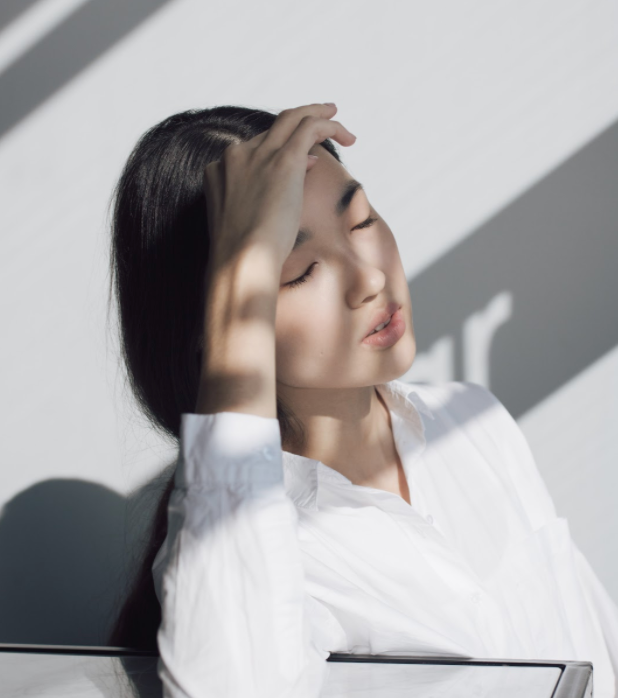
Chemical exfoliants are far superior to physical exfoliants, and glycolic is the gold standard of chemical exfoliants. It is gentle yet extremely effective, and allows for daily exfoliation which provides the glowing, even-toned and younger looking skin everyone wants. There's so much to know about glycolic and we've summarized the most important information in this Glycolic Acid FAQ.
- What is glycolic?
- What will glycolic exfoliation do for your skin?
- Will glycolic irritate your skin?
- How can I start using glycolic exfoliants?
- Should glycolic exfoliants burn?
- How often should you exfoliate with glycolic acid?
- Can I run out of skin by exfoliating with glycolic too often?
- Does skin type matter for glycolic exfoliation?
- At what age should I add a glycolic exfoliant to my skin care routine?
- When should I exfoliate with glycolic?
- Is it safe to use a glycolic exfoliant if you have broken capillaries?
- How does exfoliating treat brown spots and brown discolorations?
- Can glycolic exfoliation thicken your skin?
- Can glycolic exfoliation thin my skin?
- Should I use an exfoliating glycolic cleanser?
- Does exfoliating with glycolic make your skin sensitive to sunlight?
- Will using a glycolic exfoliant dissolve the ingredients in my other products?
- If I use a glycolic exfoliant, can I still use a self-tanner?
- Why should I use a glycolic exfoliant and not a retinoid?
- Can I combine a glycolic exfoliant with another type of exfoliant?
- Will layering a 5% glycolic exfoliant with a 10% glycolic exfoliant give me the same results as applying a 15% glycolic exfoliant?
- Should I exfoliate with glycolic before or after I get a wax?
- What does pH-adjusted mean?
- Why is buffering important?
- Why should I use glycolic exfoliation instead of microdermabrasion or other physical exfoliants such as scrubs?
- Can I use BeautyRx exfoliants with my prescription Retin-A?
- How do I get the most effective glycolic exfoliation?
- What if I’ve used an exfoliant from another line – do I still need to begin with the BeautyRx Progressive Peel?
- Are there any long-term effects of glycolic exfoliation to consider?
- Can you use a glycolic exfoliant with your sunscreen?
- Why should I use a glycolic exfoliant instead of a beta hydroxy acid such as salicylic acid or benzoyl peroxide?
- If glycolic is so great, why is this the first time I’m hearing of it?
1. What is glycolic?
Glycolic is member of the alpha hydroxy acid (AHA) family. When properly formulated and used, it’s very gentle yet extremely effective. It is naturally derived from sugar cane, which is why it’s called a “fruit acid,” but the glycolic in most skincare products today is synthesized in commercial labs. (return to top ▲)
2. What will glycolic exfoliation do for your skin?
Glycolic exfoliation effectively removes the dead cells that both sit and accumulate on the surface of your skin. These dead cells lead to dull, discolored, and uneven skin. Glycolic exfoliation therefore removes those dead cells restoring radiant, even-toned skin. Glycolic exfoliation also stimulates the healthy, live lower layers of your skin, causing them to generate new live, healthy skin and even produce collagen, all making your skin firmer. Lastly, glycolic exfoliation is instrumental in the prevention and treatment of acne breakouts and minimizing the appearance of enlarged, clogged pores. (return to top ▲)
3. Will glycolic irritate your skin?
BeautyRx glycolic exfoliants are pH-adjusted and buffered to ensure that they are effective yet also gentle on your skin. Moreover, the best way to avoid irritation is to gradually introduce glycolic to your regimen. Think about it this way. Would you go to a gym and on the first day lift a 50 pound weight? Instead, you’d gradually work your way up. When it comes to glycolic, begin with an 8% starter-strength glycolic exfoliant appropriate for your skin type (eg. the BeautyRx Essential 8% Exfoliating Serum for Normal and Combination skin, or the BeautyRx Daily Exfoliating Therapy Cream for Dry and Sensitive skin). Then, you can introduce higher strength glycolic exfoliating products (eg. the 10% BeautyRx Advanced 10% Exfoliating Pads). When introducing a higher strength, we also recommend that you alternate it with your starter strength product ever other night. After your skin has adjusted to the higher strength, you can even then move onto a 15% maximum strength glycolic exfoliant (eg. the BeautyRx Maximum 15% Exfoliating Gel for Normal and Combination skin, or the BeautyRx Maximum Exfoliating Therapy Cream for Dry and Sensitive skin). When introducing a maximum strength glycolic exfoliant, it still makes sense to alternate it with a high strength (eg. a 10%), every other day. By leveraging this gradual escalation and alternation of glycolic strengths, your skin adapts to and thereby is able to tolerate the stronger products without irritation, enabling you to achieve the optimal results that will give you the skin you’ve always dreamed of. This approach of gradual increases in strength and alternation is the exact system that Dr. Schultz provides to his patients and is at the core of his Progressive Peel. (return to top ▲)
4. How can I start using glycolic exfoliants?
We recommend that everyone begins with the BeautyRx Progressive Peel. As described above, as Dr. Schultz does with his patients, it starts you with starter strength glycolic exfoliants and safely progresses you to higher strengths over time. (return to top ▲)
5. Should glycolic exfoliants burn?
Properly formulated glycolic exfoliants should not burn, but they may tingle. The easiest way to describe the difference is that a tingle, while it may increase briefly, plateaus. On the other hand, a burn continually increases in strength. If while using any exfoliant you experience a burning sensation, discontinue use and immediately wash your face with water. Even consider consulting a dermatologist if you deem it to be necessary. (return to top ▲)
6. How often should you exfoliate with glycolic acid?
Dr. Schultz has observed through over 45,000 in-office peels and proven through the experiences of his patients that daily glycolic exfoliation delivers optimal results. While some people may be concerned that daily glycolic exfoliation is too harsh, while we cannot speak for other product lines, the formulation of BeautyRx glyciolic exfoliants, including their pH adjustment and buffering, enables them to be effectively used daily without irritation. (return to top ▲)
7. Can I run out of skin by exfoliating with glycolic too often?
Glycolic exfoliation, in fact all exfoliation, will never cause you to run out of skin. This question is usually asked based on the Hayflick Limit, which states that, "There is a limit to the number of times a fully differentiated human cell divides. That limit is between 40 and 60 divisions, and applies to all human cell types that have been studied." From this theory, it may sound like you have a finite number of skin cells and exfoliation is depleting them faster than the natural process. However, the Hayflick Limit only applies to differentiated cells, cells in their actual final, useful form. The Limit does not apply to your skin stem cells, as they are not fully differentiated and continue to make new cells for your entire life. Proper exfoliation only removes the surface layer of dead cells that should have already fallen off. Put another way, if the Hayflick limit applied to skin, then at a certain age your cuts and abrasions would stop healing! And we know that doesn’t happen. (return to top ▲)
8. Does skin type matter for glycolic exfoliation?
Glycolic exfoliation is appropriate for all skin types, and all skin types can receive all of the benefits from glycolic. In addition, for oily skin, it helps to remove dead cells, which can clog pores. For dry skin, glycolic allows moisturizers to penetrate the skin better and removes the flakes of dry, dulling dead skin. For normal skin, glycolic creates a smooth surface and a youthful, luminous glow. For sensitive skin, glycolic can be paired with moisturizers. The key, as with any skincare product, is to ensure that the vehicle (eg. cream versus serum) is skin type appropriate. (return to top ▲)
9. At what age should I add a glycolic exfoliant to my skin care routine?
Glycolic exfoliation should start in the early teens, around 13 to 15 years old, and continue throughout the rest of your life. In the earlier years, glycolic exfoliation helps to prevent and treat acne, which is common in teenage years and through your 20’s. In fact, glycolic acid treatments are a staple of Dr. Schultz’s acne treatments for his patient. In your 30s and older, the benefit of glycolic exfoliation shifts towards restoring skin smoothness and luster, as your shedding dead skin cells becomes irregular leading to accumulation of dulling dead cells which also contribute to excess brown pigmentation. Dr. Schultz’s patients visit him for weekly peels to help maintain their radiant, healthy and younger looking skin. In addition, as adult acne becomes more and more prevalent, glycolic’s importance in preventing and helping heal acne often continues past your 20’s. (return to top ▲)
10. When should I exfoliate with glycolic acid?
It is best to use your glycolic exfoliant at night. This way, it will not conflict with your sunscreen and you are less likely to sweat it off. Additionally, most people have more time for their evening skin care routine so there is time use several products such as exfoliants, moisturizers, bleaches, etc. (return to top ▲)
11. Is it safe to use a glycolic exfoliant if you have broken capillaries?
Yes, it is safe to use glycolic exfoliants with broken capillaries, and many of Dr. Schultz’s patients do. However, exfoliation removes dead surface cells, which are opaque and can actually obscure the look of the broken capillaries. Once those dead cells are removed, while the glycolic exfoliation has not aggravated the capillaries in any way, it may make them more apparent. If you have broken capillaries, see your dermatologist to talk about removing them with painless laser treatments. (return to top ▲)
12. How does exfoliating treat brown spots and brown discolorations?
When your skin is damaged, your pigment cells overproduce melanin (brown pigment) causing brown spots and discoloration. This can occur from the inflammation of acne, harmful uv rays of the sun, a curling iron burn, age, and from many other causes. As cells that have been infused with this extra pigment naturally die and collect on the surface of your skin, your discolorations increase. Glycolic exfoliation works to remove dead skin cells, including those that the extra brown pigment has already settled into, helping to restore an even skin tone. In conjunction with a skin lightener (also called a depigmentor or bleach) and a sunscreen, glycolic helps to treat and remove brown spots. (return to top ▲)
13. Can glycolic exfoliation thicken your skin?
Daily glycolic exfoliation will not thicken dead skin nor create calluses. It does however thicken the good, live layers of the epidermis which provides many beneficial effects. As glycolic exfoliation removes the top layer of dead skin, the process stimulates the production of live healthy cells and collagen in the three lower layers. This causes a thickening and evening of the healthy lower layers in the epidermis and gives your skin a luminance, helps reduce fine lines, and creates a lustrous bright finish. (return to top ▲)
14. Can glycolic exfoliation thin my skin?
No. Glycolic exfoliation removes and thins the top, dead, dulling and clogging layer, but it also stimulates cell development in the live layers of skin below, making up for any dead cells removed. (return to top ▲)
15. Should I use an exfoliating glycolic cleanser?
A glycolic cleanser does provide a deeper cleanse when compared to a traditional cleanser, however, it shouldn’t be viewed as an exfoliant to be used for anti-aging or rejuvenation purposes. The glycolic in the cleanser will only sit on your skin for 15 - 30 seconds prior to rinsing off, which is not enough time for any chemical exfoliant to have a meaningful effect. Consider pairing your glycolic cleanser with a separate glycolic treatment for best results. (return to top ▲)
16. Does exfoliating with glycolic make your skin sensitive to sunlight?
Glycolic exfoliation does not over-sensitize your skin to sunlight, as long as you use an effective sunscreen daily and you are not over-exfoliating. (return to top ▲)
17. Will using a glycolic exfoliant dissolve the ingredients in my other products?
No. Glycolic exfoliants work over a period of hours, not minutes, so your other skincare products can be applied in conjunction with your glycolic exfoliant, without conflict. However, you should always wait for any skincare product to be absorbed into your skin before applying another. The one exception to using glycolics with other products is that glycolic exfoliants (and even salicylic exfoliants) will break down retinoids. Regardless, retinoids should not be used with glycolics due to a potential for over exfoliation. Dr. Schultz believes that glycolic exfoliants are superior to retinoids and therefore there is no need to use retinoids. If you must, at least use them at opposite ends of the day. (return to top ▲)
18. If I use a glycolic exfoliant, can I still use a self-tanner?
While it may be surprising to hear, a glycolic exfoliant will actually improve the efficacy and results of your sunless tanner. A sunless tanner works by staining the dead skin cells on the top layer of your skin. If you don't exfoliate, those dead skin cells can collect into microscopic mounds that cause an uneven skin surface (and which will also result in an uneven sunless tan). Exfoliating with glycolic before using your sunless tanner will actually ensure a more beautiful, even tan. However, since the sunless tanner stains the top layers of dead skin, and a glycolic exfoliant removes some of them, the glycolic may diminish the intensity of the tan even though it makes it more even. Additionally, exfoliating may cause your sunless tan to fade more quickly. As a result, you may want to switch to exfoliating every other night to compensate for the faster fading, or even better, just reapply the self tanner more often. That being said, you will get the best sunless tan if you exfoliate prior. In fact, that is why in professional salons exfoliate you before they apply a spray-on tan. (return to top ▲)
19. Why should I use a glycolic exfoliant and not a retinoid?
While retinoids used to be the go-to exfoliant in the 1980’s – Dr. Schultz use to prescribe them in the 80’s – the frequent side effects, irritation, and reactions Dr. Schultz observed in his patients and heard from countless others led him to stop prescribing retinoids all together. Between the flaking, stinging, facial darkening, rashes, and breaking of capillaries, any results that users experienced were not worth the side effects. Instead, Dr. Schultz found a superior alternative: pH-adjusted and buffered, gentle yet effective glycolic exfoliants. Glycolic truly is the gold standard of chemical exfoliation. It does not cause irritation or side effects. It just effectively removes dead cells to make your skin more radiant, healthier and younger looking. (return to top ▲)
20. Can I combine a glycolic exfoliant with another type of exfoliant?
Yes, assuming you are not over exfoliating, using combination exfoliants is a great way to maximize your results. For example, layering salicylic acid and glycolic allows both to work better. This is because the glycolic is water-soluble, so it is good at dissolving excess cells on the surface of the skin. Salicylic acid, on the other hand, is lipid soluble, which means it is better at penetrating deeper into the skin, even though it is less effective at dissolving dead skin cells. When used together, the glycolic preps the surface of the skin to allow the salicylic to penetrate a little deeper, which in turn, allows the remaining glycolic to penetrate deeper and work better than it would have on its own. This is part of the reciprocal enabling ingredient technology Dr. Schultz leverages in his proprietary compounds, including his favorite proprietary exfoliating compound, Tetrafoliant™. (return to top ▲)
21. Will layering a 5% glycolic exfoliant with a 10% glycolic exfoliant give me the same results as applying a 15% glycolic exfoliant?
No. Layering these two products would result in a 7.5% glycolic product if the same amount of both products was used . This is because the amount of acid is based on a weighted average. It is not additive. (return to top ▲)
22. Should I exfoliate with glycolic before or after I get a wax?
Waxing not only removes hair, but also removes skin cells. Therefore, waxing is a form of physical exfoliation. If you exfoliate regularly, your dead cells have been removed and the live layer of cells is exposed. This means the wax may grab those live cells, causing a waxing burn. To avoid this, stop exfoliating the area you are getting waxed two or three days prior to your appointment, or tell the esthetician you have been exfoliating so she or he can adjust the wax appropriately. After waxing, wait two or three days before resuming your nightly exfoliation. (return to top ▲)
23. What does pH-adjusted mean?
pH is the level of acidity or alkalinity in any chemical. pH ranges from 1 to 14, with 1 being the most acidic, and 14 being the most alkaline. 7 is approximately the pH of our skin. pH is very important in terms of glycolic as it determines the effectiveness and potential irritancy. In terms of effectiveness, glycolic exists in skincare products in two different forms. The first form is bound to proteins in the product. The second form is free floating in the product. It’s the free-floating portion that actually exfoliates your skin and determines the efficacy of the exfoliant. The amount of glycolic that is bound and that is free-floating is determined by the pH. The lower the pH, the more that is free floating, and vice versa. This brings us to pH’s effect on the potential irritancy of the product. While a lower pH yields more free glycolic, the lower the pH, the more irritating the exfoliant. This is why precise pH-adjustment, that only comes with time and experience, is so important when developing glycolic exfoliating products. Dr. Schultz’s expertise from having performed 45,000 in-office peels has enabled him to achieve glycolic formulations that deliver highly effective glycolic exfoliation that is not at all irritating. (return to top ▲)
24. Why is buffering important?
Over time, even pH-adjusted glycolic will change in strength because glycolic that is bound can become free. Buffering is the chemical process that ensures that the glycolic that is bound stays bound. By maintaining the pH of the product, the (effective) free glycolic remains constant, which ensures that its efficacy (and gentleness) is also consistent throughout the life of the product. (return to top ▲)
25. Why should I use glycolic exfoliation instead of microdermabrasion or other physical exfoliants such as scrubs?
Chemical exfoliation is superior to physical exfoliation. It’s almost impossible to deliver consistent, specific results when physically exfoliating. This is due to every physical exfoliation session varying in direct proportion to the duration of use of the physical exfoliant, the pressure or strength of rubbing with the physical exfoliant, and the actual makeup of the exfoliant (eg. crushed nut shells, sand, a washcloth, etc.) Chemical exfoliants are consistent and specific because they are developed to provide exactly what the formulator intended, no more or no less. For example, a 10% chemical exfoliant will only exfoliate as much as it is meant to, regardless of how long you leave it on or how much you apply. Glycolic acid is the gold standard of chemical exfoliants due to its wide therapeutic range (ie. strength can range from 1% - 70%, although strengths above 15% should only be administered by a professional), which makes it very versatile and effective, as well as its ability, when formulated properly, to be non-irritating and cause no side effects. (return to top ▲)
26. Can I use BeautyRx exfoliants with my prescription Retin-A?
BeautyRx exfoliants offer the same great skin benefits as retinoids such as Retin-A, but do so without the irritation that many experience from retinoids. In fact, Dr. Schultz used to prescribe retinoids to his patients but now has them use only glycolic. However, if you would like to continue use of Retin-A or other retinoids while also incorporating a BeautyRx exfoliant into your routine, you can do so by applying the two products at different times of day. For example, apply the BeautyRx product in the morning and apply the Retin-A at night. This way, you can be sure that you get full results from both products. (return to top ▲)
27. How do I get the most effective glycolic exfoliation?
To get the best results from your glycolic exfoliation, aside from using your exfoliant at night after you have used a cleanser and a toner, we always recommend beginning with a starter-strength exfoliant and working your way up in strength over time to allow your skin to adjust. To make this easy for you, we’ve developed the Progressive Peel to jumpstart your skin’s rejuvenation. This six-week regimen enables you to achieve maximum exfoliation with no irritation. (return to top ▲)
28. What if I’ve used an exfoliant from another line – do I still need to begin with the BeautyRx Progressive Peel?
Since BeautyRx uses a proprietary glycolic formulation, even if you’ve already been exfoliating, just as Dr. Schultz recommends to his patients, we still recommend that you begin with our starter strength. In fact, we recommend that you begin the same exfoliating regimen that Dr. Schultz’s patients do: The Progressive Peel. It will start you gently with a starter strength glycolic exfoliant and end with the results of a maximum strength glycolic exfoliant, preventing any irritation. If while beginning the Progressive Peel you believe your skin is ready for a higher strength glycolic exfoliant than the starting serum, we recommend you skip to Step 2 of the Progressive Peel. We never recommend starting with maximum strength glycolic exfoliants. (return to top ▲)
29. Are there any long-term effects of glycolic exfoliation to consider?
The long-term effects of glycolic exfoliation make it a great addition to your daily skin care regimen. Prolonged use of glycolic sends a positive feedback signal to the bottom layer of the epidermis to produce more normal cells, causing a thickening of the healthy layer, resulting in more translucent and lustrous skin. So while it minimizes the dead top layer, it thickens and enhances the healthy, living layers underneath. Glycolic exfoliation also sends a message to the dermis to produce more collagen, resulting in strengthened skin and an improved look to fine lines and wrinkles. And of course, daily glycolic exfoliation will ensure you maintain radiant, even-toned, younger looking skin. (return to top ▲)
30. Can you use a glycolic exfoliant with your sunscreen?
Sunscreen is the most important preventative skin care product you can use. When the FDA determines the SPF rating of a sunscreen, they do so by applying the sunscreen to bare skin, without any other products interfering, and measure the level of protection the sunscreen provides. As a result, we cannot guarantee what effect on the sunscreen’s SPF applying a glycolic product underneath or on top of it would have. Since sunscreen is so important, Dr. Schultz recommends using your glycolic products at night to ensure there is no interference with your sunscreen during the day. The only exception to this rule is combination sunscreen, glycolic products that have been tested by the FDA, such as the BeautyRx Exfoliating Green Tea Complex SPF 20. (return to top ▲)
31. Why should I use a glycolic exfoliant instead of a beta hydroxy acid such as salicylic acid or benzoyl peroxide?
Glycolic has a wide therapeutic window which means that it can be used in concentrations ranging from 1% - 70% (higher strengths should only be applied in-office by professionals). This means that glycolic products can be tailored to the exact skin condition you are trying to treat, from dull under eye area skin to acne-prone skin. Beta Hydroxy Acids, such as benzoyl peroxide and salicylic acid, are very brittle in comparison. (return to top ▲)
32. If glycolic is so great, why is this the first time I’m hearing of it?
When glycolic was first formulated in the early 1990's, it was patented and the owners charged a licensing fee. This fee caused glycolic to be too expensive to be included in mainstream skin care products. The patent expired a few years ago and the presence of glycolic acid products in stores has slowly, but steadily grown. With the experience of 45,000 in-office glycolic peels, Dr. Schultz’s formulations still rise to the top, and glycolic will continue to be the gold standard in exfoliation. (return to top ▲)
 BRX REWARDS
BRX REWARDS


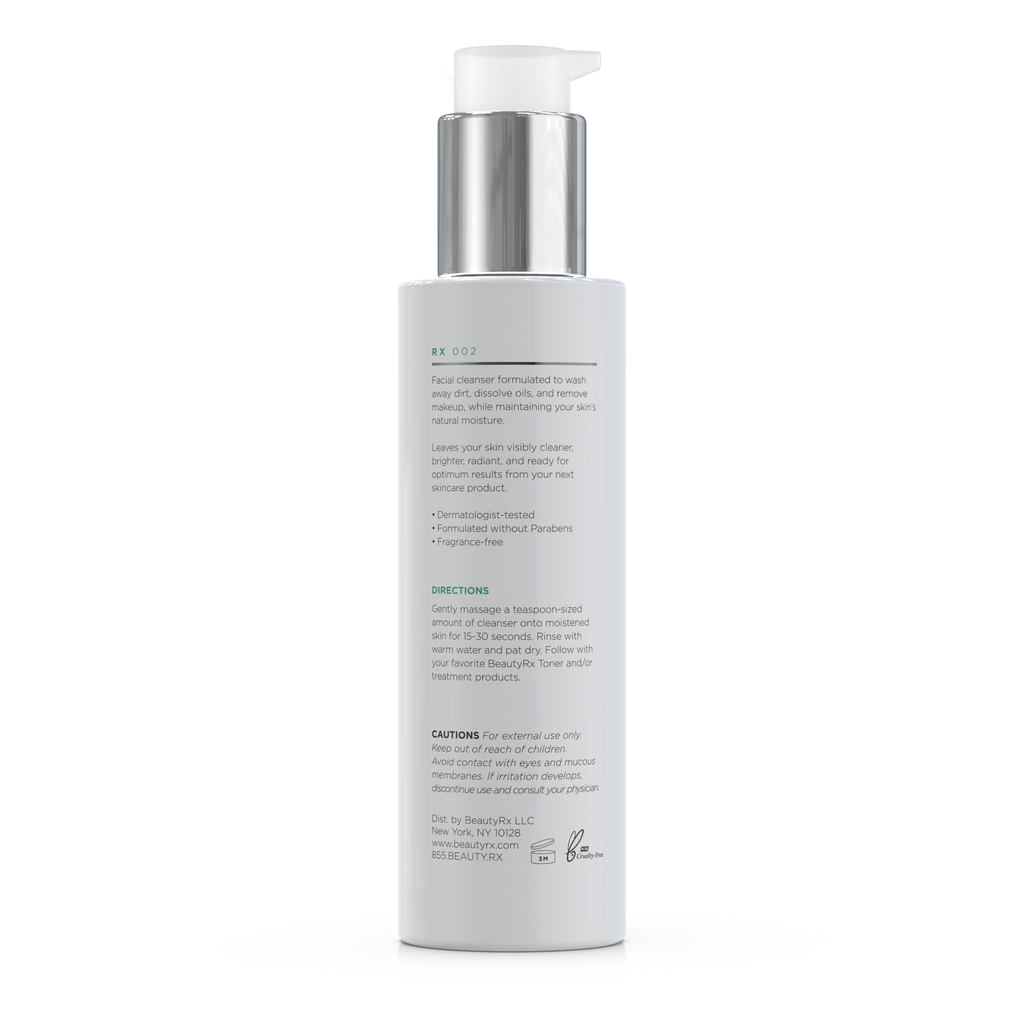
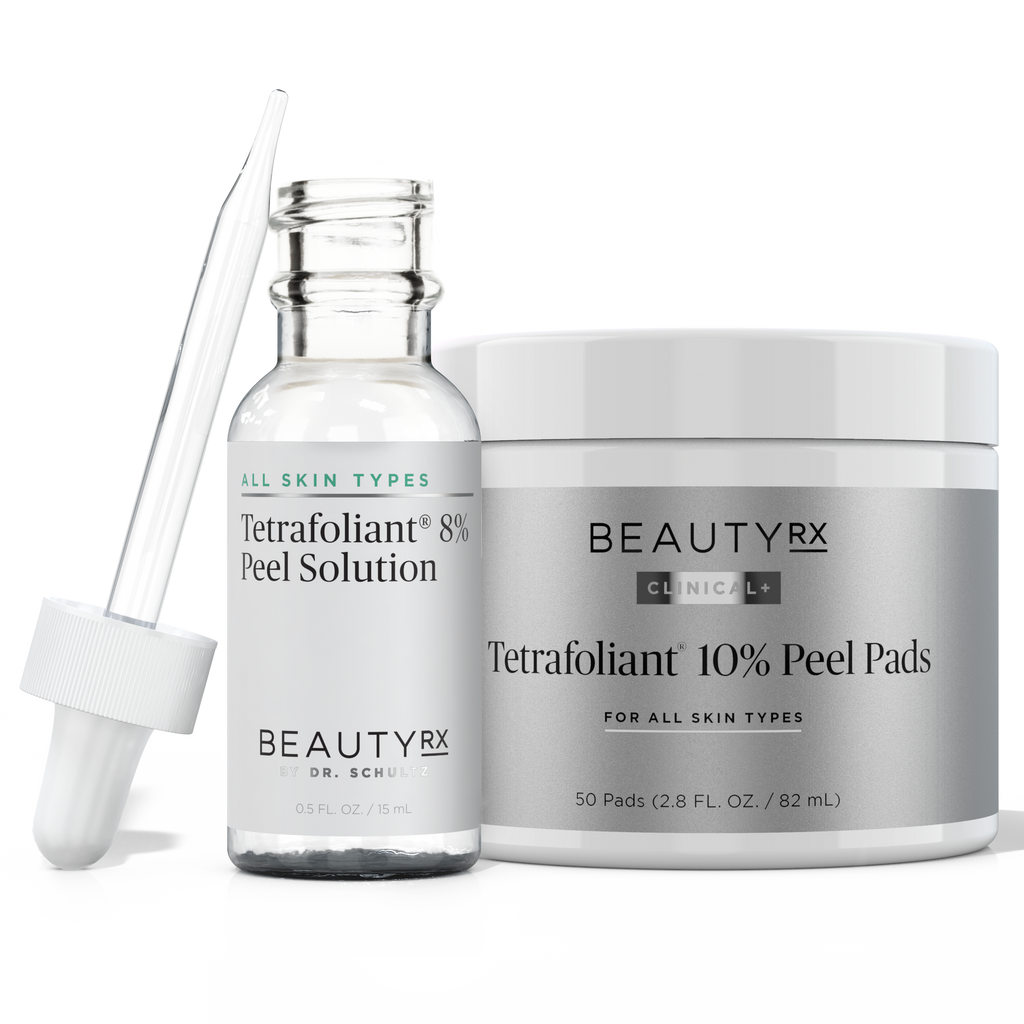

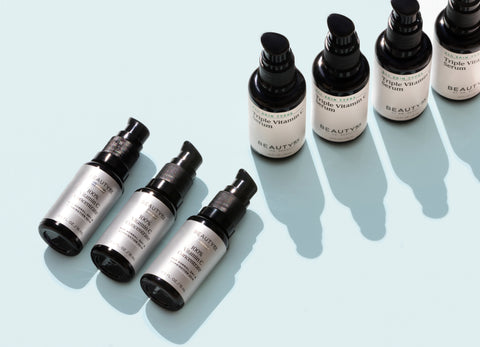

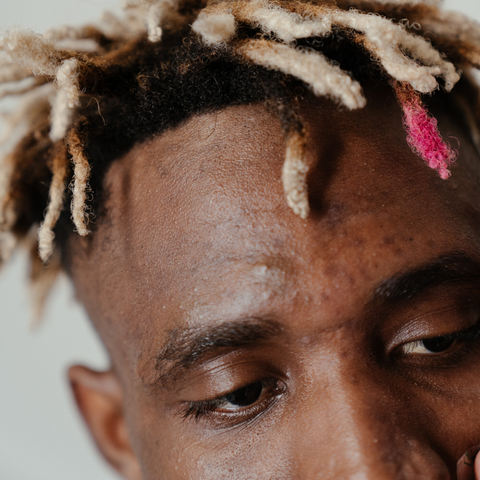
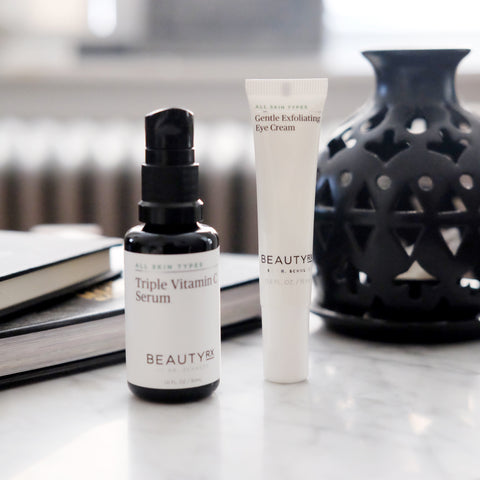
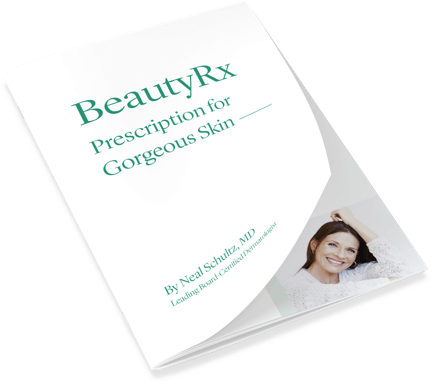
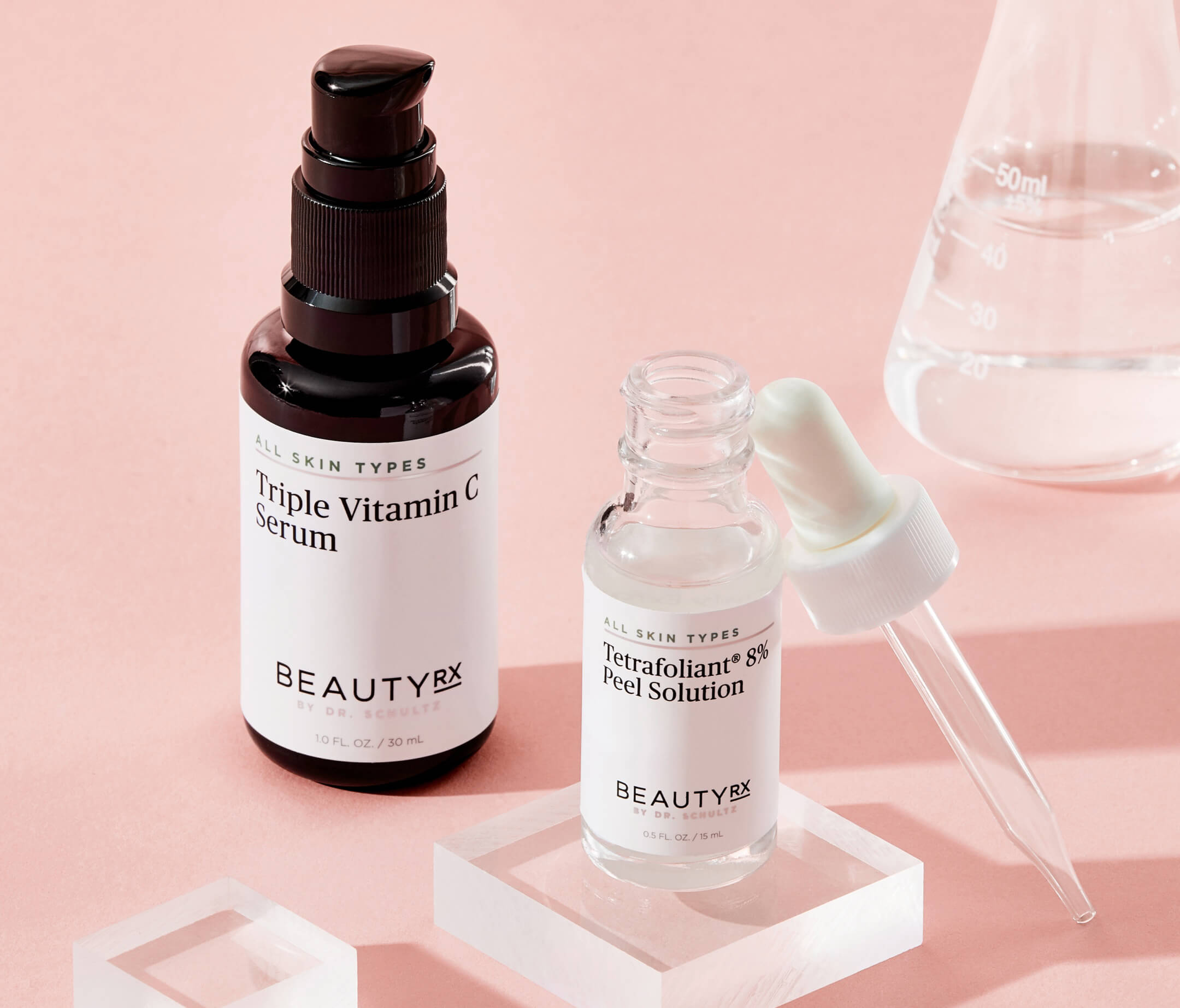
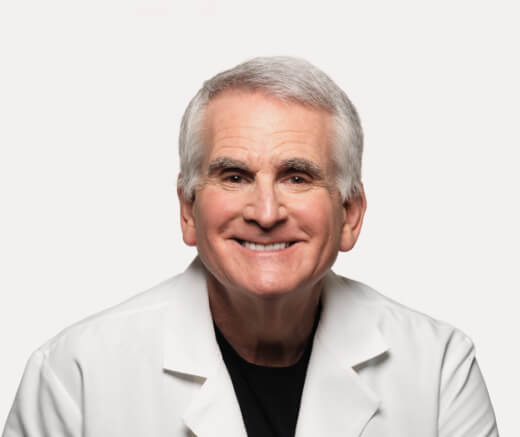
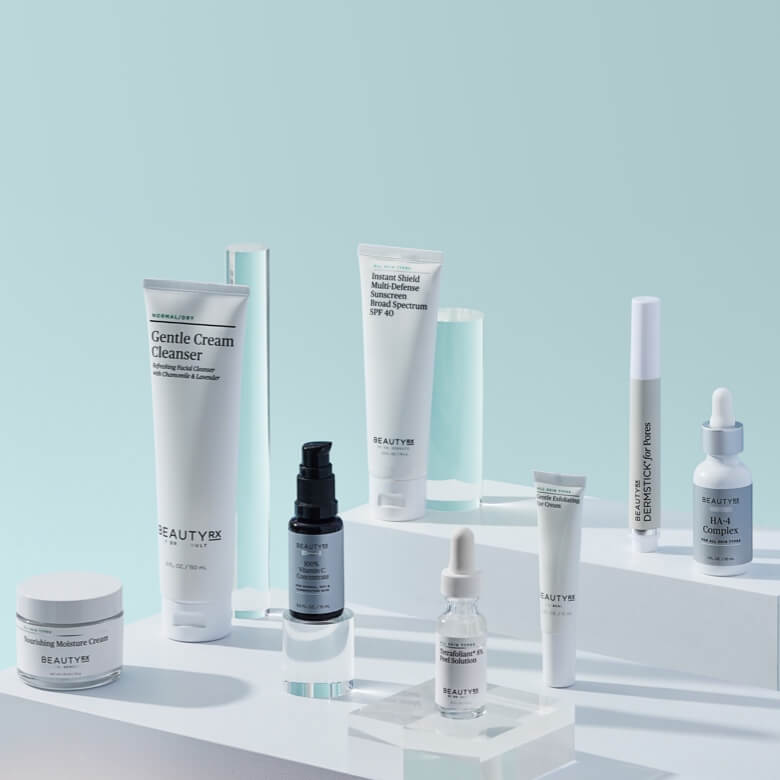
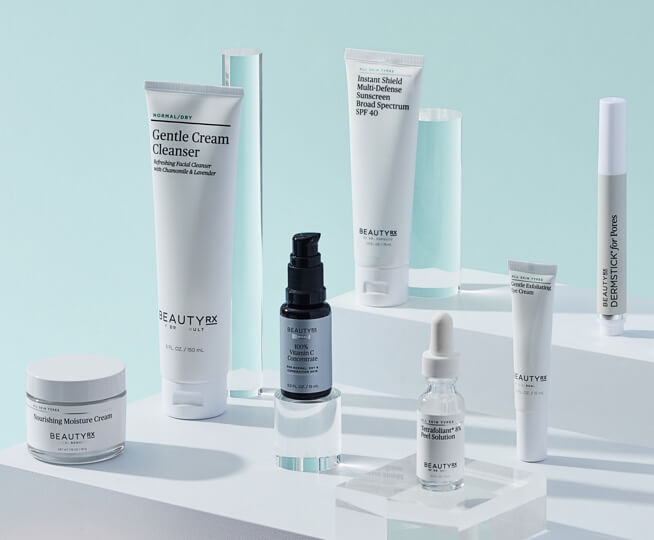


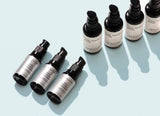

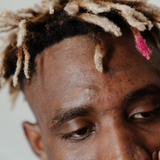
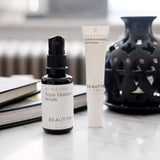


Healthy information,thank you.
I quite like looking through an article that can make people think. Also, many thanks for allowing me to comment!
Irvin Glassey https://www.minds.com/blog/view/800600082037248000
I have been using a pore purifying glycolic facial mask for 2 weeks now. I’ve noticed that my nose has begin to peel. My questions: What do I do during the peeling process? What should I be putting on the skin? I’m using an SPF which leaves a white film. Overpaid for this product. Would you recommend one for me? Please advise!!!
Thank you, N. California
Can glycolic acid and Trichloracetic acid be used on acne and Eczema ?
This was very informative and I’m looking forward to starting my regime with Dr Schultz peel.